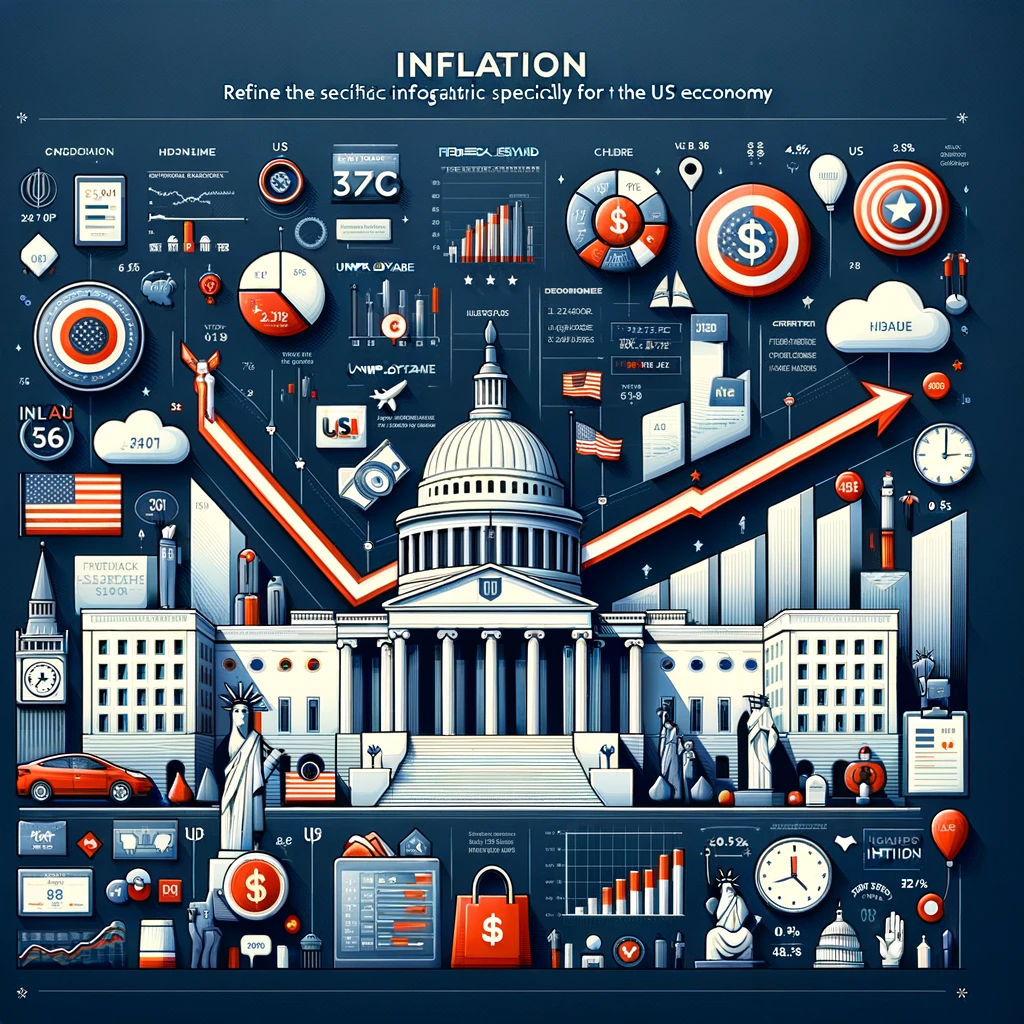Navigating US Inflation: Trends and Expectations as of June 2023
2023-06-05

Deceleration in U.S. Consumer Price Index Indicates Potential Easing of Inflation
The latest data on the Consumer Price Index (CPI) for All Urban Consumers All Items in U.S. City Average shows some noteworthy trends. After peaking at 9.0% in June 2022, the year-over-year change in CPI underwent a declining trend, reaching 4.9% in both March and April 2023. This indicates a slowdown in the rate of inflation. While the 7.7% in October 2022 and 7.0% in November 2022 signaled a substantial decrease, the year-end figures of 6.4% in December 2022 and 6.6% in January 2023 hinted at a potential stabilization. However, the subsequent drop to 6.1% in February 2023 and the further decline to 4.9% in both March and April 2023 signify a meaningful departure from the high levels observed in mid-2022. This recent moderation aligns with long-term historical trends, especially when juxtaposed with the notably higher levels seen in 2022. The average year-over-year changes in the previous years were comparatively lower, with a peak of 4.7% in 2021. The current 4.9% represents a return to this level, indicating a potential reversion to the previous, more subdued inflationary environment. This deceleration in the CPI could have implications for the overall U.S. inflation rate, suggesting a possible easing of price pressures in the near term. However, sustained monitoring and analysis of subsequent data releases would be crucial for fully grasping the trajectory of inflation in the coming months.
Significant Fluctuations in Sticky Price Consumer Price Index: Implications for U.S. Inflation
The Sticky Price Consumer Price Index, which tracks goods and services with infrequently changing prices, has shown significant fluctuations in the past year. The year-over-year change in May 2022 stood at 90.2%, reaching a peak of 152.7% in August 2022, before declining to 33.9% in April 2023. These figures indicate a substantial increase in inflation expectations from some stability to high volatility and then a sharp drop. Putting these numbers into a broader context, the average year-over-year changes in the previous years were notably lower, with 2018 at 8.2%, 2019 at 5.0%, and 2020 at -11.3%. However, 2021 showed a significant increase at 17.3%, and 2022 reached an unprecedented 130.2%. This may indicate a shift from previous trends, potentially impacting U.S. inflation. The recent decline from 152.7% in August 2022 to 33.9% in April 2023 suggests a reduction in future inflation expectations. This could be a response to various factors such as policy changes, market trends, or supply chain disruptions that influenced consumer behavior and price stability. While this decline might alleviate some concerns about runaway inflation, the data indicates a need for careful monitoring to understand the evolving economic landscape.
Consumer Inflation Expectations Show Downward Trend, Signaling Potential Economic Impact
The latest University of Michigan Surveys of Consumers data on inflation expectations shows a downward trend in median expected price change over the past few months. In January 2023, the median expected price change for the next 12 months was 3.9%, down from 4.4% in December 2022. This downward trend continued in February 2023 with a slight increase to 4.1% and then a further decrease to 3.6% in March 2023, before picking up again to 4.6% in April 2023 and 4.2% in May 2023. This trend suggests that consumers are becoming less optimistic about future price increases. The decrease from the peak of 5.3% in June 2022 to the current 4.2% in May 2023 indicates a notable shift in consumer inflation expectations. This trend may have implications for U.S. inflation as lower inflation expectations could potentially lead to reduced spending and investment, thus impacting overall economic activity. It also signifies that consumers are adjusting their expectations in response to actual inflation data, which has shown signs of easing in recent months. This adjustment could impact consumer behavior and, consequently, inflation dynamics in the near future.
February 2024 Breakeven Inflation Rates: Moderate Expectations for Medium to Long Term
The latest monthly data on the Breakeven Inflation Rate, as reported by the Federal Reserve Bank of St. Louis, shows that the 5-year breakeven inflation rate is at 2.35%, the 10-year rate is at 2.3%, and the 30-year rate stands at 2.26% as of February 2024. The breakeven inflation rate is an important metric as it reflects market expectations for future inflation. These numbers indicate that investors are expecting moderate inflation over the medium to long term, with the 5-year rate slightly higher than the 10-year and 30-year rates. This suggests a relatively stable inflation expectation over the longer term. It's important for policymakers, investors, and businesses to monitor these figures closely, as they can impact decision-making related to investments, interest rates, and overall economic outlook.
May 2023 Expected Inflation Rates Derived from Federal Reserve Bank of Cleveland Data
The latest monthly data from the Federal Reserve Bank of Cleveland shows the following expected inflation rates for May 2023: 1-Year: 2.66%, 2-Year: 2.41%, 5-Year: 2.19%, and 10-Year: 2.16%. These figures are derived from a model that incorporates a range of inputs, including Treasury yields, inflation data, inflation swaps, and survey-based measures of inflation expectations. The consistency of these figures across different time horizons provides an indication of the expected inflation trends in the medium to longer term. It's worth noting that these expectations play a crucial role in shaping economic decision-making, including investment and monetary policy, and are closely monitored by market participants and policymakers alike.
